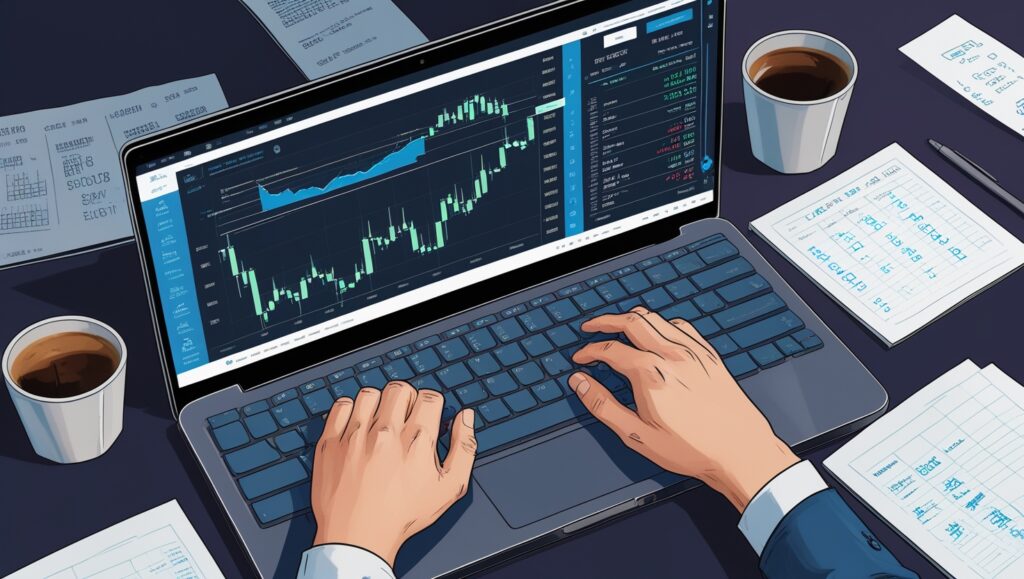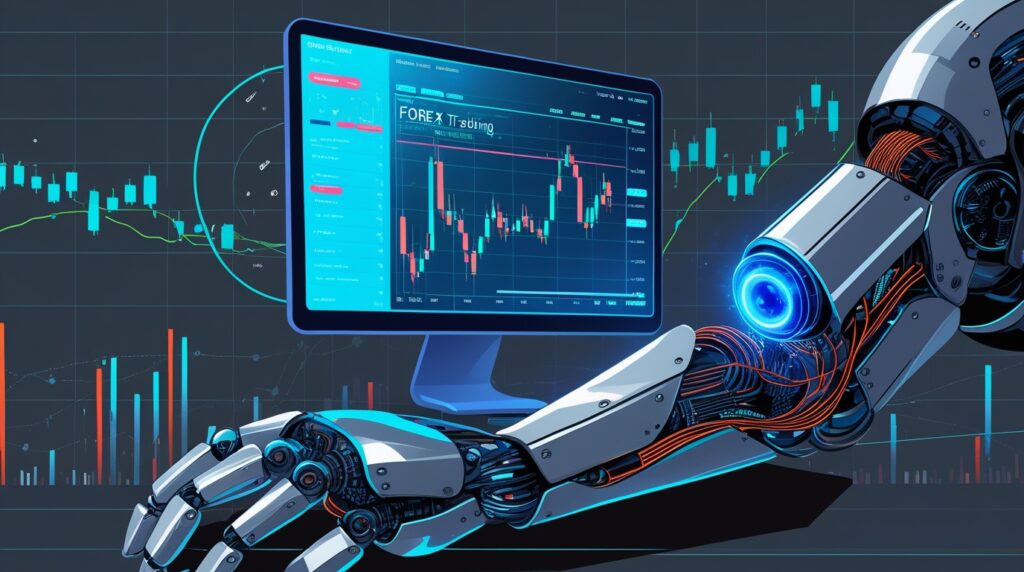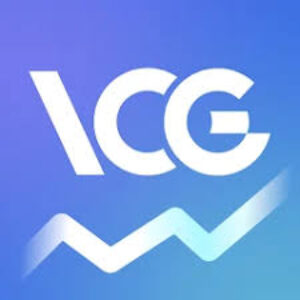
The foreign exchange (Forex) market is the largest financial market in the world, and traders now have two fundamentally different approaches: traditional manual trading and algorithmic AI-driven trading. This article compares AI Forex trading bots with human/manual traders, focusing on metrics like accuracy, risk management, adaptability, ROI, latency, and scalability. We draw on expert insights (e.g. MIT Professor Andrew Lo and AI-quant veteran Sergey Ryzhavin) and industry data to provide a thorough, up-to-date analysis. Examples of popular tools (MetaTrader EAs, AI trading apps, copy-trading platforms) are discussed.
Overview: AI Forex Trading Bot vs Manual Trading
| Trading Aspect | AI Forex Trading Bots | Manual (Human) Trading |
|---|---|---|
| Execution Speed & Accuracy |
Millisecond execution
70-85% win rates reported
• Ultra-low latency trading (ideal for HFT)• Precise entry/exit at optimal prices • Can monitor multiple currency pairs simultaneously • No human reaction delays or emotional hesitation |
Seconds reaction time
• Human judgment for complex market interpretation• Can adapt quickly to unprecedented events • Limited to 1-2 currency pairs effectively • Prone to timing errors under stress |
| Risk Management |
• Dynamic position sizing based on volatility • Automated stop-losses and take-profits • Portfolio-wide correlation monitoring • Disciplined adherence to risk parameters • Multi-layer risk controls and regime detection |
• Flexible risk assessment for novel situations • Can exercise discretionary judgment • May break own rules under emotional pressure • Experience-based intuition for market sentiment • Less systematic risk monitoring |
| Market Analysis Capability |
• Process vast amounts of data simultaneously • Analyze price, news, and sentiment feeds in real-time • Pattern recognition across multiple timeframes • 24/7 market monitoring across global time zones • Historical backtesting and continuous learning |
• Interpret qualitative factors (geopolitics, central bank tone) • Recognize market context and unusual conditions • Limited data processing capacity • Cannot monitor markets 24/7 effectively • Rely on experience and intuition |
| Adaptability & Learning |
• Machine learning algorithms adapt to new patterns • Continuous model refinement from trade outcomes • Can switch between multiple strategies automatically • Limitation: Struggles with unprecedented events outside training data • May fail during “black swan” events |
• Excellent flexibility for novel market conditions • Can completely change strategy on intuition • Recognize and react to unprecedented situations • Limitation: Slower learning from large datasets • Cannot systematically process complex patterns |
| ROI & Performance |
40-360%+ annual returns (backtested)
Sharpe ratios >2.0 reported
• Compound small gains rapidly through high-frequency trading• Consistent performance without emotional interference • Can exploit micro-price discrepancies • Caution: Backtested results may not reflect real-world performance |
10-50% annual returns (typical pros)
• Performance varies widely by trader skill• Most retail traders underperform market benchmarks • Cannot achieve high-frequency compounding • Limited by human capacity and emotion |
| Scalability |
• Highly scalable across multiple markets and instruments • Can manage hundreds of positions simultaneously • Cloud deployment for unlimited processing power • Minimal additional overhead with increased capital • Parallel execution across global markets |
• Limited by human cognitive capacity • Each additional market adds significant workload • Cannot effectively manage high-volume trading • Scaling requires hiring additional traders • Prone to errors with increased complexity |
| Market Trends & Adoption |
Market Growth: AI trading platforms projected to reach $70B by 2034 (~20% CAGR)
Industry Adoption: 90%+ fund managers using or planning AI tools
Market Share: 92% of Forex volume now executed by algorithms
|
• Still valued for strategy oversight and risk decisions • Increasingly working in hybrid approaches with AI • Essential for unprecedented market events • Role shifting toward AI supervision and strategic guidance |
| Expert Consensus |
MIT’s Andrew Lo: “AI will revolutionize finance within 5 years, working alongside humans to manage money and balance risk, but needs extra layers of protection.”
Sergey Ryzhavin: “AI will exceed human analysis in most ways within 1-2 years, but cannot predict truly novel events. The future is about leveraging both AI and human strengths.”
Hybrid Approach: Most successful strategies combine AI execution with human oversight for strategy and risk management decisions.
|
|
Key Points:
- AI bots excel at speed, consistency and multi-market analysis but rely on quality data and algorithms.
- Manual traders offer human intuition and adaptability but are limited by emotion, time, and ability to monitor multiple assets.
- Industry forecasts show AI trading platforms growing ~20% annually (to ~$70B by 2034), and surveys find >90% of fund managers using or planning AI.
- Expert opinion (Andrew Lo) suggests a “revolution” in finance as humans will interact differently with AI over the next few years. However, experts caution that AI has limits: it learns patterns but cannot fully predict unprecedented events.
- Many traders use a hybrid approach: automated bots for 24/7 execution and routine data analysis, with human oversight for strategy and risk decisions.
What Is an AI Forex Trading Bot?
An AI Forex trading bot (or forex robot) is software that uses algorithms, machine learning and data analysis to trade currencies automatically. Unlike fixed-rule bots, AI-powered systems continuously learn from market data to refine strategies. They can scan multiple currency pairs, news feeds and indicators in real time, executing buy/sell orders based on statistical patterns, not human emotion. Modern AI bots operate across various timeframes (from seconds to hours) and may integrate “smart” risk controls (dynamic stop-losses, position sizing) as part of their strategy. In short, they automate trading tasks by design while adapting to new data, whereas traditional expert advisors (EAs) follow static rules.
Key features of AI Forex bots:
- Data Analysis at Scale: Instantly process price feeds, fundamentals, and even sentiment data (news, social media) to find complex patterns.
- 24/7 Operation: Trade continuously across global markets and time zones, ensuring no opportunity is missed.
- Backtesting & Learning: Use historical forex data to train models (neural networks, decision trees, etc.) for predictive insights, then refine through ongoing learning.
Examples of AI Trading Apps and Bots
Several commercial platforms now market AI trading tools: e.g. MetaTrader Expert Advisors with ML plugins, copy-trading bots like those on Zulutrade or Tickeron, and new AI trading apps (like eToro’s AI Signals or Robinhood’s “Trader AI” feature). There are also specialized AI stock and crypto bots (Trade Ideas, TrendSpider, CryptoHopper) which illustrate how AI techniques carry over to Forex. These tools often boast features like voice-assisted strategy setup, app/mobile integration, and social copying, reflecting the trend toward democratizing AI for traders.
Manual (Human) Trading
Manual trading means human traders make all decisions: analyzing charts, reading news, and executing trades by hand. This approach grants full control and the ability to use human judgment. Experienced pros can factor in unquantifiable cues (e.g. geopolitics, market sentiment shifts) that AI models might miss.

Advantages of Manual Trading:
- Human Judgment and Intuition: Traders can interpret qualitative factors (breaking news, economic context, central bank comments) and exercise discretion.
- Flexibility: Strategies can be adjusted on-the-fly for unusual market events or black swans (which rigid algorithms might mishandle).
- Emotional Insight: Intuition and experience can sometimes spot opportunities or risks that data alone does not reveal.
Drawbacks of Manual Trading:
- Time and Attention: Humans must watch charts and news constantly. Forex is a 24/5 market, so opportunities often arise outside standard hours. This is very time-consuming, especially for day traders.
- Emotional Bias: Fear and greed can cloud judgment. Studies show even veteran traders fall prey to overtrading or ignoring risk after wins/losses.
- Scalability Limits: A person can trade only a few currency pairs at once. Attempting to monitor dozens of markets or execute split-second orders often leads to missed chances.
As an example, Intrinio notes that manual traders may miss fast moves or important signals due to limited data processing capacity, while AI systems can watch many pairs and indicators simultaneously. In practice, this means human strategies may underperform high-frequency or algorithmic ones during volatile periods.
Accuracy and Execution Speed
AI Bots: A key strength is execution speed and execution accuracy. AI bots can place orders in milliseconds, far faster than humans. This ultra-low latency matters in Forex, where micro-changes in quotes can mean profit. For instance, bots are ideal for high-frequency trading (HFT) or scalping strategies. They enter and exit trades at precise price points and can be programmed to chase very narrow spreads.
Machine learning also helps AI bots refine accuracy: Tickeron reports many of its AI trading bots sustain Sharpe ratios above 2.0 (very high risk-adjusted returns) and win rates above 70%. Some specialized bots even hit 85% win rates on tested setups. Similarly, a performance example found certain 5-minute AI bots yielding annual returns of over 360% by compounding small gains. (These are illustrative vendor claims, but they highlight that automated systems can achieve consistency and high throughput.)
Manual Traders: Humans operate much slower. Even elite traders cannot react to quote changes in microseconds. A professional can perhaps manage a handful of positions with good precision, but cannot systematically exploit tiny price discrepancies in many markets at once. Accuracy is also affected by emotion: a trader might hesitate on a signal, or mis-click under stress.
Table 1 compares AI vs manual on key execution metrics:
| Metric | AI Trading Bot | Manual Trading (Human) |
| Speed (Latency) | Millisecond-level order execution and monitoring of multiple markets simultaneously. Ideal for HFT and flash trades. | Order placement takes human reaction time (seconds). Limited to 1–2 pairs at a time. |
| Consistency | Executes predefined strategy relentlessly 24/5. No fatigue or impatience, ensuring discipline. | Susceptible to emotional swings and fatigue; may deviate from plan under stress. |
| Data Throughput | Can process huge volumes of historical and live data (price, sentiment, news) continuously. | Limited by human cognitive speed. Hard to monitor multiple indicators/currency pairs simultaneously. |
| Price Accuracy | Very precise entry/exit based on set criteria and real-time tick data. Leverages tight spreads for small gains. | Manual entries are less precise, often at slightly worse prices due to slower reaction. |
| Backtested ROI | Often tested on historical data; leading bots report high simulated returns (e.g. +50–100%+ ann.). | Humans don’t have rigorous backtesting; performance varies widely by trader skill and market conditions. |
| Adaptive Learning | Modern systems use machine learning to adapt parameters over time. (See Adaptability below.) | Traders learn from experience but can’t systematically retrain on big data. |
Overall, AI bots outpace humans in raw speed and the ability to exploit micro-opportunities. However, speed is only an advantage if the algorithmic strategy is sound.
Risk Management
Effective risk management is critical in Forex. AI bots and humans handle risk differently:
- AI Bots and Risk Controls: Sophisticated AI systems embed risk logic directly. For example, advanced bots dynamically adjust position size, stop-loss, and take-profit based on volatility and drawdown models. DukeSCopy notes that AI can act like a “financial bodyguard,” cutting losses before emotions intervene. In practice, bots use mathematical rules: for instance, setting stop-loss to a factor of recent volatility, or not overexposing to any single currency. Platforms like Tickeron emphasize multi-layer risk controls: position-sizing algorithms, portfolio-wide correlation checks, dynamic stop orders and even regime-shift detection. In other words, top AI bots automatically preserve capital and diversify risk with preprogrammed discipline.
- Human Risk Management: Traders rely on experience and rules-of-thumb (e.g. risk 2% of capital per trade). A human might reduce size after a few losses or move stops, but consistency varies. Humans are notorious for ignoring their own rules under pressure (e.g. “let profits run” or holding losers too long). Emotional biases like overconfidence can increase risk exposure inadvertently. For instance, a trader might abandon a stop-loss on a high-conviction trade, something a disciplined algorithm would never do.
Adaptability: When markets shift abruptly, AI’s rigid rules can be a drawback (see below). Humans can react creatively – for example, by stopping trading during black swan events or shifting to alternative strategies – if they recognize a regime change. Conversely, a well-designed AI can identify emerging risk (e.g. spiking correlation) before a human does, as it processes more signals continuously.
In summary, AI bots typically enforce risk limits more systematically (often resulting in smaller drawdowns), but lack human judgment in crises; humans have discretion but often err emotionally. A hybrid is common: letting bots cut losses and a trader supervise overall risk.
Adaptability and Learning
Algorithmic Adaptability: Traditional (non-AI) automated systems follow fixed rules. AI-enhanced bots can learn or be retrained. Modern AI bots use techniques like reinforcement learning or continual learning: after each trade, the model tweaks its parameters to improve accuracy. This lets them adapt gradually to evolving markets (e.g. changing correlations or volatility regimes). They also can run multiple strategies and switch or blend them when needed. For example, Tickeron’s multi-timeframe bots auto-adjust for bull vs. bear markets by examining incoming data.

However, learning has limits. Experts emphasize that AI models are only as good as their data and design. Ryzhavin notes AI excels at pattern analysis but “doesn’t predict the future” outside its training patterns. In practice, AI can be caught off-guard by unprecedented events. For instance, many AI systems performed poorly during the March 2020 COVID crash because historical data did not contain such a scenario. As MIT’s Andrew Lo puts it, financial AI tools will need “extra layers of protection” before they can operate autonomously. In other words, humans must oversee AI, especially during anomalies.
Human Adaptability: People excel at novel situations. A veteran trader might recall a distant market event or jump out of a trade when something “feels” off, even if data doesn’t immediately signal it. This can be valuable for black swans. On the other hand, humans adapt only at the pace they can learn and unlearn biases, which is often slow.
Hybrid Approaches: Many professional traders use AI bots for routine analysis/trading and step in for strategy shifts. As one FX strategist notes, combining AI and human strengths is optimal: AI handles pattern recognition and speed, while traders apply macro judgment and risk discretion.
Return on Investment (ROI) and Scalability
Potential ROI of AI Bots: Claims about AI ROI vary widely. Some leading AI trading services cite double- or triple-digit annual gains in backtests. For example, certain high-frequency AI setups have shown theoretical returns >300% per year in recent simulations. Others achieve smaller but steady returns (e.g. 20–50% per year) with very high win rates (70–85%) and controlled drawdowns. These figures often outstrip what average manual traders achieve, especially since bots compound small gains rapidly.
However, real-world ROI depends on many factors: market conditions, transaction costs, slippage, and how well the bot’s model holds up. Backtesting and simulation can overestimate future returns (“overfitting”). A well-known caution: “AI washing” – companies may overstate AI performance – remains a risk.
Manual Trading ROI: Human traders’ ROI is highly individual. Professional Forex fund managers often target ~10–20% annual returns with controlled risk. Some top discretionary traders may achieve higher returns, but they take on more risk. The highest consistent ROI historically comes from systematic strategies (often AI-driven) in quant funds. Most retail/manual traders do not beat market benchmarks or professional bots due to limits on speed and consistency.
Scalability: AI systems scale effortlessly. A single algorithm can manage hundreds of trades across many currency pairs or even markets (stocks, commodities) in parallel. Adding more capital to an AI strategy typically means proportionally more trades without additional overhead. By contrast, humans cannot arbitrarily scale trading activity. One trader manually executing 100 positions is impossible; doing more usually means hiring assistants or breaking tasks into parts, which is inefficient and error-prone.
Recent Trends and Data in AI Forex Trading
The adoption of AI in Forex is accelerating. Industry analysts forecast massive growth for AI trading platforms: a report by Precedence Research estimates the global AI trading platform market will grow from about $13.5 billion in 2025 to nearly $70 billion by 2034 (a ~20% CAGR). This reflects surging demand for algorithmic solutions. Developed markets currently lead (North America holds ~38% of the AI trading market), but Asia-Pacific is the fastest-growing region, driven by tech investment and mobile trading.
A Technavio analysis highlights that Forex itself is expanding (projected +10.6% CAGR, adding $582B to 2025–29) thanks to digitalization and 24/7 trading opportunities. One key trend: 24×5 automated trading. With Forex open nearly round-the-clock, AI bots fill in for humans sleeping across time zones.
Surveys of finance professionals underscore AI’s ubiquity: >90% of investment managers are using or planning to use AI tools. Morgan Stanley, Deutsche Bank and other big banks have publicly stated that AI-driven models already support forecasting and execution. On the trading platform side, brokers like MT4/5 now offer built-in AI EA frameworks, and new fintech apps emphasize AI analysis.
Despite enthusiasm, experts caution on hype. Ryzhavin warns many mistakenly view AI as a “market oracle”; regulators even flag “AI washing” claims. Nevertheless, AI’s ability to parse vast forex data (price, news, social chatter) is undeniably giving early adopters an edge. In short, the trend is clear: traders are increasingly integrating automated AI tools into their workflows, backed by continuing technological improvements (faster hardware, better ML algorithms, alternative data).
Performance Comparison Table
| Aspect | AI Trading Bot | Manual Trading (Human) |
| Accuracy | High precision on defined signals. Backtested models can achieve 70–85%+ win rates. Eliminates human errors in execution. | Accuracy varies by trader skill. Prone to entry/exit timing mistakes. Humans can misjudge signals under stress. |
| Risk Management | Built-in risk controls: adaptive position sizing, dynamic stops based on volatility, portfolio hedging (as seen in advanced bots). | Depends on trader discipline. Humans may break their own rules under pressure. Adapts qualitatively to news but not always systematically to data. |
| Adaptability | Learns incrementally from new data (machine learning). Can monitor many signals for regime changes. Rigid if market regime shifts outside model scope. | Flexibility to change strategy on a whim (e.g. close all trades on black swan). Can interpret novel situations. However, learning new patterns is slower and less quantitative. |
| ROI (Typical Returns) | Backtests of AI strategies report double-digit to triple-digit annual returns. E.g. Tickeron bots report 40%–360%+. | Varies widely. Top pros may achieve ~20–50% per year, most retail traders return closer to market averages. Lacks the compounding speed of automated systems. |
| Latency & Speed | Executes in milliseconds; can scalp small profits across many pairs at once. | Reaction time on the order of seconds. Cannot exploit fleeting arbitrage opportunities or trade multiple markets in real-time. |
| Scalability | Highly scalable: identical strategy can trade dozens of pairs or lots of volume with minimal extra effort. Cloud deployment and parallel servers add scale. | Not scalable beyond the trader’s capacity. Each additional currency or time frame adds cognitive load and work, making true high-volume, multi-asset trading impractical. |
(Sources: Intrinio, EBC, Tickeron)
Tools and Examples
Practical examples help illustrate these differences. On the AI side, MetaTrader Expert Advisors (EAs) have long let traders automate Forex strategies; new AI-driven EAs refine these with ML. Platforms like Forex EA Robot suites or services (e.g. AlgosOne) advertise self-learning bots. Copy-trading networks (ZuluTrade, eToro’s CopyPortfolios) often use AI signals. For stock traders using AI bots, tools like Trade Ideas (HOLLY AI) and TrendSpider now incorporate predictive models; these principles increasingly apply to Forex as well. On the manual side, traders use platforms like TradingView or MT4/5 to execute discretionary trades, sometimes supplemented by signal indicators (e.g. Autochartist alerts).
Some real-world scenario comparisons: A study found that algorithmic strategies in FX have grown; one report estimated “92% of Forex trading volume is now executed by algorithms, not humans”. This underlines that most market moves come from bots and institutions. For example, during high volatility events (like flash crashes), bots react instantly, whereas many manual traders either couldn’t intervene fast enough or stepped aside.
Another dimension is latency in decision-making. A forex robot can instantly reallocate a portfolio as soon as a key economic indicator is released; a human reacting to news might take minutes to interpret and trade. In automated systems, this reduces slippage.
While tools vary, one concrete insight from experts is data quality and latency: AI bots require reliable, high-frequency data feeds (often via dedicated APIs or VPS hosting) to operate optimally. Manual traders might rely on slower retail feeds. Brokers now advertise “low-latency execution” as critical for bots, reflecting how every millisecond counts in automated trading.
Expert Insights
Two leading experts offer perspectives on this debate:
- Prof. Andrew W. Lo (MIT Sloan School) – A finance professor specializing in the intersection of markets and technology. Bloomberg reports Lo believes we’ll see “a revolution in how humans interact with AI” in finance within five years. He notes AI tools will eventually assist everyday portfolio management, “working alongside humans to help manage money, balance risk, [and] tailor strategies”. His caveat: the industry needs robust safeguards (“extra layers of protection”) before AI can be fully relied upon.
- Sergey Ryzhavin (Investopedia interview) – Head of a trading-tech firm with 15+ years of AI trading experience. He observes a strong trend toward outsourcing trade execution to algorithms: “Each year, fewer individual investors want to manually press the buy/sell buttons”. Ryzhavin predicts AI will exceed human analysis in most ways within 1–2 years. He highlights AI’s strength in spotting subtle market signals (citing examples like AI detecting pre-crisis stock patterns ahead of SVB collapse). At the same time, he warns AI cannot foresee truly novel events – it identifies patterns, not crystal balls. He advises blending AI insights with human judgment for best results.
These expert viewpoints reinforce our analysis: AI brings unprecedented data-handling power and speed, but human oversight remains vital. As Lo notes, AI won’t replace people entirely but will change how we invest. Ryzhavin cautions that diversification across AI models and continued risk discipline are essential.
Conclusion
For professional Forex traders, the choice between AI Forex trading bots and manual trading is no longer binary. Each has clear strengths: AI bots deliver speed, consistency, and scale, making them ideal for high-volume or high-frequency strategies. Manual trading offers nuanced judgment and flexibility when markets behave erratically or novel information arises.
In practice, the most successful approaches often combine both: using AI-driven systems to handle routine market scanning and execution, while allocating capital and adjusting strategy manually. As one industry analyst notes, “understanding both methods and when to use them is key to long-term success”. Looking ahead, AI’s role in Forex will only deepen. Traders should stay informed on developments (e.g. new AI trading apps, machine-learning signal services) and continuously evaluate the ROI and risk profiles of any bot or strategy they adopt.
Forward Outlook: Expect AI Forex trading bots to become more sophisticated (e.g. integrating alternative data like satellite or social feeds) and more regulated (addressing “AI washing”). Traders should watch for hybrid platforms that offer human-AI collaboration tools. Meanwhile, maintaining core trading skills and risk management remains crucial. In the evolving Forex landscape, adaptability and expertise will determine who benefits most from automation’s rise.
FAQ
What is an AI Forex trading bot and how does it differ from a typical algorithmic trader?
An AI Forex trading bot is an automated system that uses machine learning to analyze data and place trades. Unlike fixed-rule algorithmic traders that follow strict programmed rules, AI bots continuously learn from market data (price history, news, sentiment) to update their strategies. This allows AI bots to adapt over time. They also can process more complex information (like patterns or text data) than simpler algorithms.
How accurate are AI trading bots compared to human traders?
AI bots are generally faster and more consistent, and many achieve high win rates in backtests. For example, one report noted AI bots maintaining 70–85% win rates with high Sharpe ratios. However, “accuracy” depends on the strategy and market conditions. Humans may occasionally see patterns or news events that bots miss, but can also make emotional errors. Overall, AI bots can exploit small patterns faster, often leading to higher average accuracy per trade, especially in high-frequency scenarios.
What are the main risks of using an AI bot for Forex trading?
Key risks include model risk and technological risk. If the AI’s data or algorithm is flawed (bad training data, overfitting to past events), performance can suffer. Bots also can fail in unprecedented scenarios (e.g. extreme news shocks) as they rely on historical patterns. There’s also operational risk: a software or connectivity failure can cause losses if the bot can’t exit positions. Lastly, regulatory risk is emerging: some regulators warn of “AI washing” where services claim AI benefits without real substance. Good practice is to understand a bot’s logic, diversify across strategies, and monitor it closely.
How do AI trading bots manage risk and adapt to volatile markets?
Sophisticated AI bots use dynamic risk controls. They adjust position size based on real-time volatility and account equity, and set stop-losses using statistical models (e.g. tightening stops in choppy markets). They also diversify across currency pairs and monitor correlations between positions. In contrast, many traders use fixed rules (like a constant 2% risk per trade). AI systems can adapt these rules on the fly. However, during sudden crises, bots may not fully recognize a regime shift without human oversight. Hence, human traders often intervene or pause automation in extremely volatile conditions.
Can beginners use AI trading apps effectively?
Many new AI trading apps (mobile or web platforms) aim to be user-friendly. They typically offer pre-built AI strategies or copy-trading, so you don’t need to code. Beginners can benefit by following vetted AI signals rather than making each decision manually. However, even in an app, it’s crucial to set sensible risk parameters and not blindly trust any signal. Education on how the AI works and starting with small capital or demo mode is advised. Expert traders recommend treating AI tools as assistants, not magic boxes, to gradually build confidence.
Will AI replace human Forex traders?
Unlikely in the near term. Experts agree humans and AI will coexist. MIT’s Andrew Lo predicts a “revolution” in finance, but notes AI will augment rather than completely replace people. Humans still add value in strategy design, judgment during unprecedented events, and in areas like negotiations or judgment-based decisions. In practice, many successful trading teams combine AI algorithms (for data processing and execution) with human experts overseeing strategy. Ryzhavin emphasizes that the future is about leveraging both AI and human strengths.

















